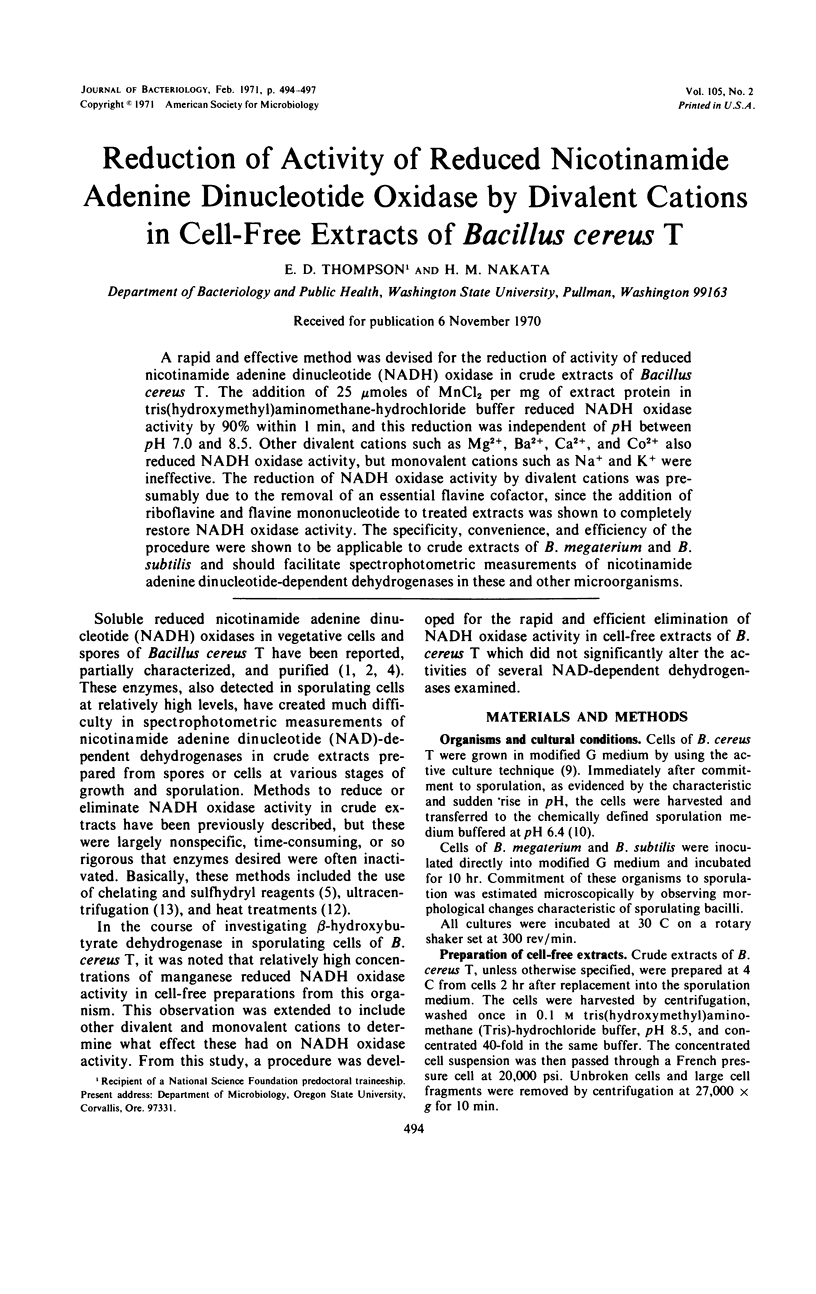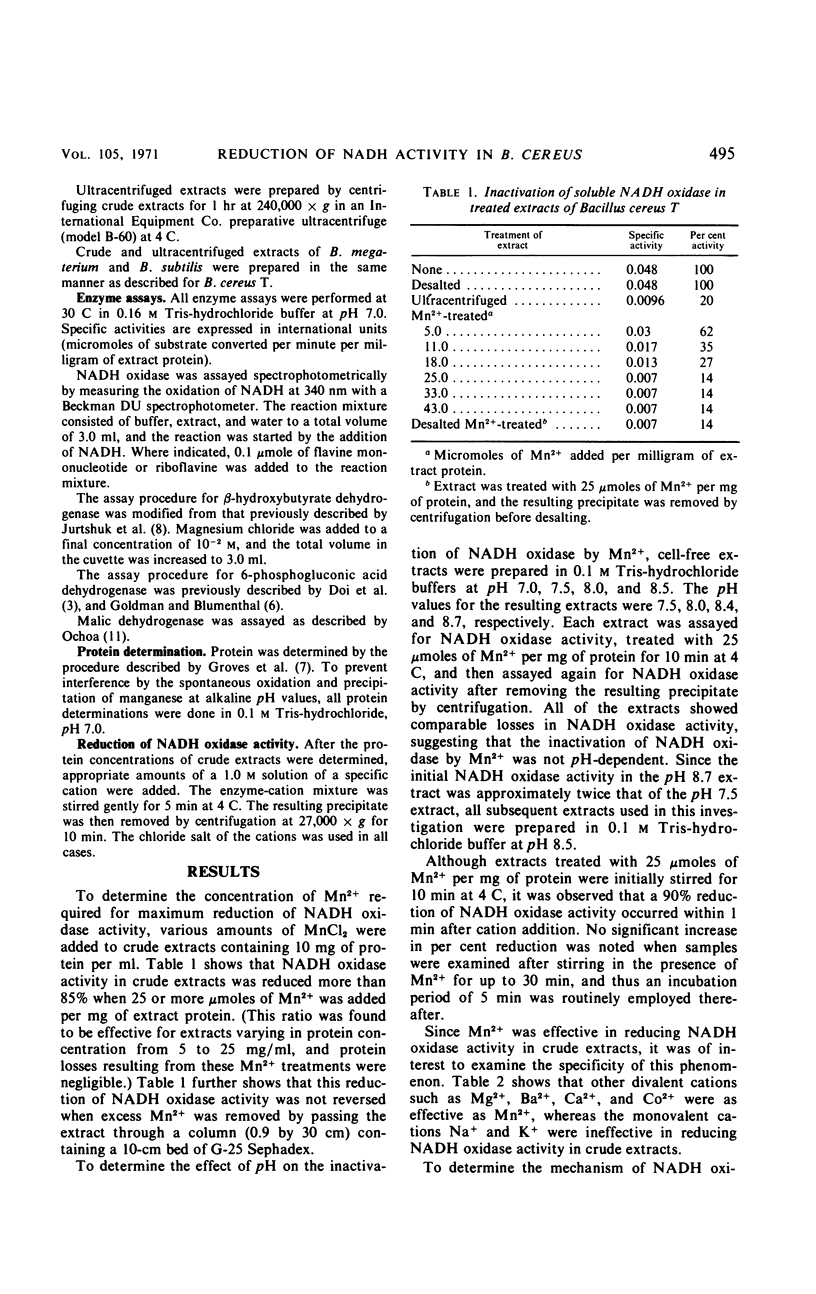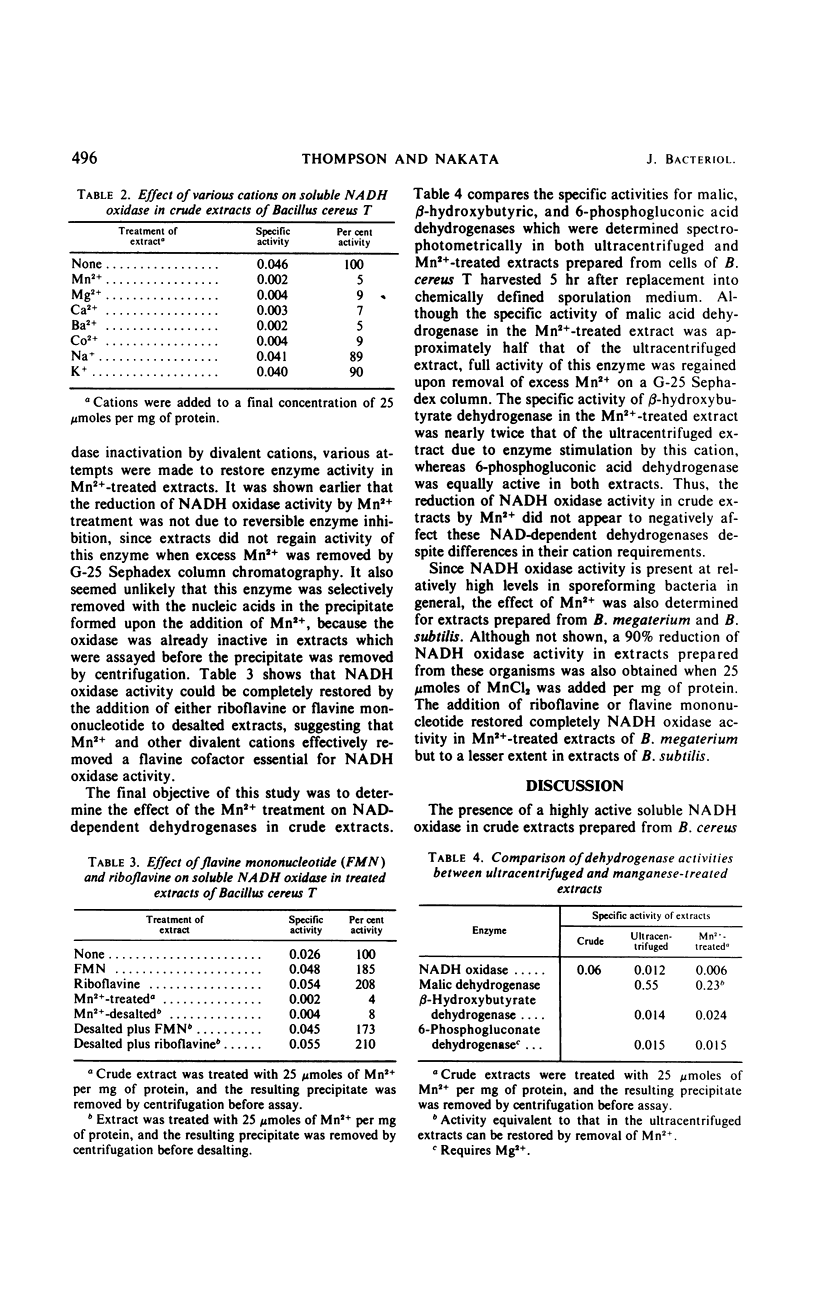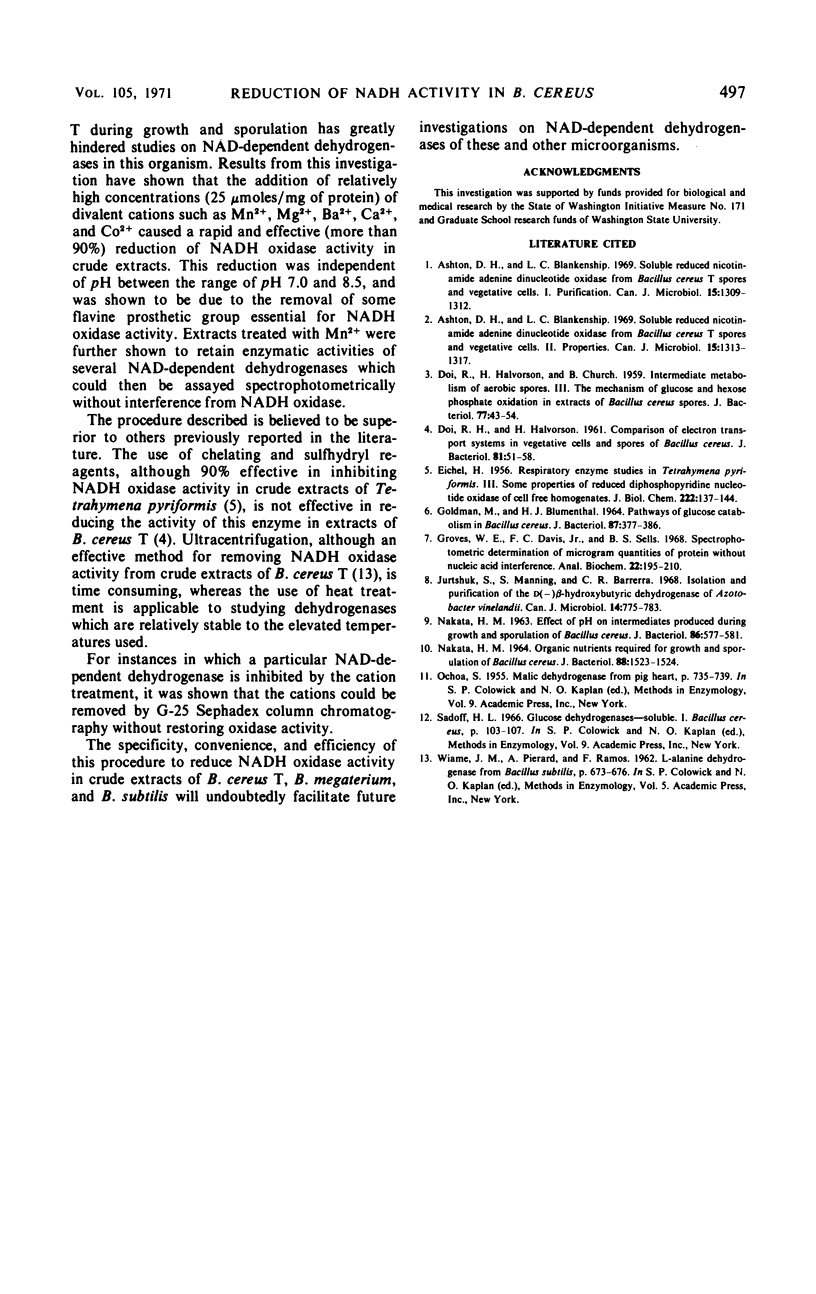Abstract
A rapid and effective method was devised for the reduction of activity of reduced nicotinamide adenine dinucleotide (NADH) oxidase in crude extracts of Bacillus cereus T. The addition of 25 μmoles of MnCl2 per mg of extract protein in tris(hydroxymethyl)aminomethane-hydrochloride buffer reduced NADH oxidase activity by 90% within 1 min, and this reduction was independent of pH between pH 7.0 and 8.5. Other divalent cations such as Mg2+, Ba2+, Ca2+, and Co2+ also reduced NADH oxidase activity, but monovalent cations such as Na+ and K+ were ineffective. The reduction of NADH oxidase activity by divalent cations was presumably due to the removal of an essential flavine cofactor, since the addition of riboflavine and flavine mononucleotide to treated extracts was shown to completely restore NADH oxidase activity. The specificity, convenience, and efficiency of the procedure were shown to be applicable to crude extracts of B. megaterium and B. subtilis and should facilitate spectrophotometric measurements of nicotinamide adenine dinucleotide-dependent dehydrogenases in these and other microorganisms.
Full text
PDF



Selected References
These references are in PubMed. This may not be the complete list of references from this article.
- Ashton D. H., Blankenship L. C. Soluble reduced nicotinamide adenine dinucleotide oxidase from Bacillus cereus T spores and vegetative cells. I. Purification. Can J Microbiol. 1969 Nov;15(11):1309–1312. doi: 10.1139/m69-237. [DOI] [PubMed] [Google Scholar]
- Ashton D. H., Blankenship L. C. Soluble reduced nicotinamide adenine dinucleotide oxidase from Bacillus cereus T spores and vegetative cells. II. Properties. Can J Microbiol. 1969 Nov;15(11):1313–1317. doi: 10.1139/m69-238. [DOI] [PubMed] [Google Scholar]
- DOI R. H., HALVORSON H. Comparison of electron transport systems in vegetative cells and spores of Bacillus cereus. J Bacteriol. 1961 Jan;81:51–58. doi: 10.1128/jb.81.1.51-58.1961. [DOI] [PMC free article] [PubMed] [Google Scholar]
- DOI R., HALVORSON H., CHURCH B. Intermediate metabolism of aerobic spores. III. The mechanism of glucose and hexose phosphate oxidation in extracts of Bacillus cereus spores. J Bacteriol. 1959 Jan;77(1):43–54. doi: 10.1128/jb.77.1.43-54.1959. [DOI] [PMC free article] [PubMed] [Google Scholar]
- EICHEL H. J. Respiratory enzyme studies in Tetrahymena pyriformis. III. Some properties of reduced diphosphopyridine nucleotide oxidase of cell-free homogenates. J Biol Chem. 1956 Sep;222(1):137–144. [PubMed] [Google Scholar]
- GOLDMAN M., BLUMENTHAL H. J. PATHWAYS OF GLUCOSE CATABOLISM IN BACILLUS CEREUS. J Bacteriol. 1964 Feb;87:377–386. doi: 10.1128/jb.87.2.377-386.1964. [DOI] [PMC free article] [PubMed] [Google Scholar]
- Groves W. E., Davis F. C., Jr, Sells B. H. Spectrophotometric determination of microgram quantities of protein without nucleic acid interference. Anal Biochem. 1968 Feb;22(2):195–210. doi: 10.1016/0003-2697(68)90307-2. [DOI] [PubMed] [Google Scholar]
- Jurtshuk P., Manning S., Barrera C. R. Isolation and purification of the D(-)beta-hydroxybutyric dehydrogenase of Azotobacter vinelandii. Can J Microbiol. 1968 Jul;14(7):775–783. doi: 10.1139/m68-129. [DOI] [PubMed] [Google Scholar]
- NAKATA H. M. EFFECT OF PH ON INTERMEDIATES PRODUCED DURING GROWTH AND SPORULATION OF BACILLUS CEREUS. J Bacteriol. 1963 Sep;86:577–581. doi: 10.1128/jb.86.3.577-581.1963. [DOI] [PMC free article] [PubMed] [Google Scholar]
- NAKATA H. M. ORGANIC NUTRIENTS REQUIRED FOR GROWTH AND SPORULATION OF BACILLUS CEREUS. J Bacteriol. 1964 Nov;88:1522–1524. doi: 10.1128/jb.88.5.1522-1524.1964. [DOI] [PMC free article] [PubMed] [Google Scholar]


